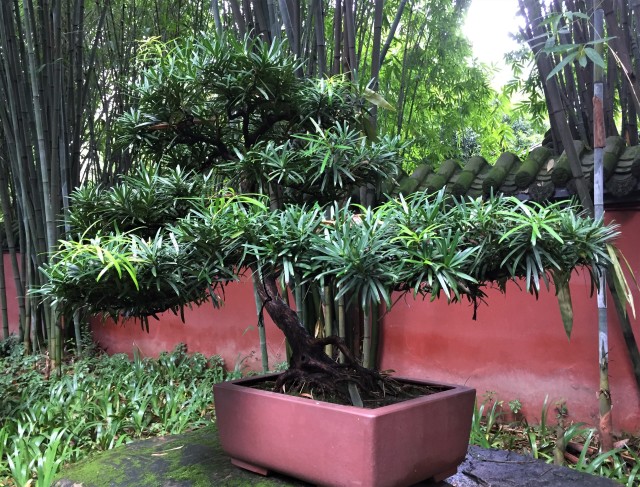Indoor vs Outdoor Bonsai Trees
Indoor vs Outdoor Bonsai Trees are a captivating blend of art and horticulture. Whether you’re a seasoned bonsai enthusiast or just starting out, choosing between indoor vs outdoor bonsai trees is one of the first—and most important—decisions you’ll make. In this article, we’ll help you understand the differences, advantages, and care requirements of both to ensure you select the right type for your environment and lifestyle.
Understanding Bonsai Trees
The word bonsai refers to the ancient Japanese art form of growing miniature trees in containers. Although any tree can technically be grown as a bonsai, their environmental needs differ greatly depending on whether they are suited for indoor or outdoor growth.
Indoor Bonsai Trees
Indoor bonsai trees are typically tropical or subtropical species that can survive in a controlled indoor environment. They are ideal for individuals living in apartments or regions with harsh winters.
Popular Indoor Bonsai Species
- Ficus: One of the most forgiving indoor bonsai species, perfect for beginners.
- Jade: A succulent bonsai that stores water and needs minimal attention.
- Schefflera: Known for its umbrella-like leaves and adaptability indoors.
- Chinese Elm: Can adapt to both indoor and outdoor environments.
Advantages of Indoor Bonsai
- Can thrive year-round in climate-controlled environments.
- Ideal for small living spaces like offices and apartments.
- Easier to protect from pests and adverse weather.
Challenges of Indoor Bonsai
- Requires sufficient light—often artificial grow lights are needed.
- May need regular misting for humidity control.
- Growth can be slower due to limited exposure to natural elements.
Outdoor Bonsai Trees
Outdoor bonsai trees are typically temperate species that follow natural seasonal cycles. These trees require exposure to sunlight, wind, and rain, and they often go dormant in the winter months.
Popular Outdoor Bonsai Species:-
- Juniper: A hardy evergreen popular with beginners.
- Pine: Classic bonsai trees that symbolize longevity.
- Maple: Known for their vibrant seasonal color changes.
- Azalea: Flowering bonsai that adds color and beauty.
Advantages of Outdoor Bonsai
- Thrive in natural sunlight and airflow.
- Display natural growth cycles with seasonal changes.
- Often grow more robustly than indoor bonsai.
Challenges of Outdoor Bonsai
- Require protection from extreme weather (frost, heatwaves, storms).
- May attract pests or animals.
- Need regular watering, especially in summer.
Climate and Environmental Considerations
Your local climate plays a big role in determining whether you should opt for an indoor or outdoor bonsai. For example:
- If you live in a tropical or subtropical area, outdoor tropical bonsai may thrive all year.
- In colder regions, it’s safer to keep tropical species indoors or bring them in during the winter.
- Temperate trees must be kept outside so they can enter dormancy in the winter.
Lifestyle Factors to Consider
Beyond climate, your lifestyle should guide your decision. Ask yourself:
- Do you travel often or forget to water your plants? Choose a hardy indoor variety like Ficus.
- Do you enjoy gardening and have outdoor space? A Juniper or Pine bonsai may be perfect.
- Are you a beginner looking for a low-maintenance option? Start with an indoor Chinese Elm.
Lighting Requirements: Natural vs Artificial
Outdoor bonsai benefit from full-spectrum sunlight, which is difficult to replicate indoors. However, with the use of full-spectrum LED grow lights, indoor bonsai can still thrive. Be sure to:
- Place indoor bonsai near south-facing windows when possible.
- Use LED grow lights for 10–12 hours a day during darker months.
- Rotate trees weekly to promote balanced growth.
Watering and Feeding
Regardless of location, all bonsai require consistent watering and fertilizing. Here are general tips:
- Check soil moisture daily—water when the topsoil feels dry.
- Use bonsai-specific fertilizers every 2–4 weeks during growing season.
- Avoid overwatering, especially indoors where evaporation is slower.
Best Bonsai for Beginners
New to bonsai? Here are some beginner-friendly picks:
- Indoor: Ficus, Chinese Elm, Jade
- Outdoor: Juniper, Trident Maple, Boxwood
You can find a curated collection of beginner bonsai trees here on bonsaitreeforsale.net.
Conclusion: Which Is Right for You?
The decision between an indoor and outdoor bonsai tree depends on your environment, daily routine, and gardening goals. If you enjoy working with natural light and seasons, outdoor bonsai offer authenticity and stronger growth. If convenience and climate control are priorities, indoor species can still thrive and bring peace to your space.
Whatever you choose, proper care and a little patience will reward you with a living work of art. Looking to get started? Browse our exclusive selection of bonsai trees for sale and find the perfect match for your home or garden today.
FAQs
Can all bonsai trees be grown indoors?
No. Only tropical and subtropical species like Ficus and Jade are suitable for indoor growing. Temperate trees must experience seasonal changes outdoors.
What’s the easiest bonsai for beginners?
Ficus is considered the best bonsai tree for beginners due to its adaptability and resilience to varying light and water conditions.
How much sunlight does a bonsai need?
Outdoor bonsai need 4–6 hours of direct sunlight daily. Indoor bonsai should be placed near a bright window or under grow lights for 10–12 hours per day.
Can I keep an outdoor bonsai inside during winter?
Only if it’s a tropical or subtropical variety. Temperate bonsai species need cold dormancy to survive and should be placed in an unheated garage or cold frame.
